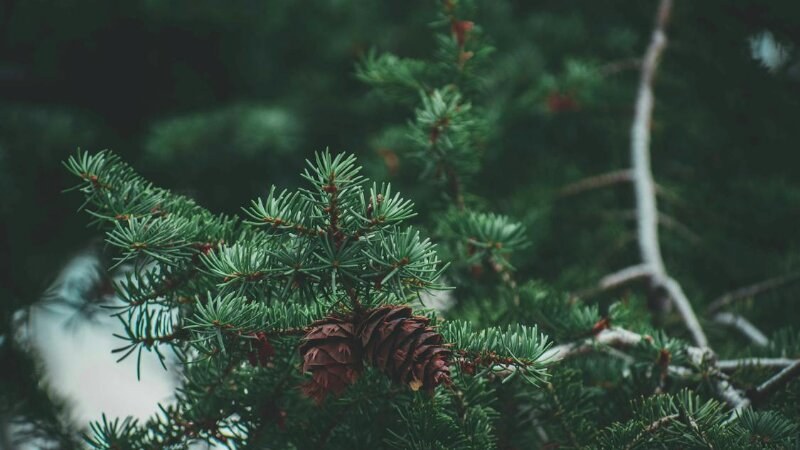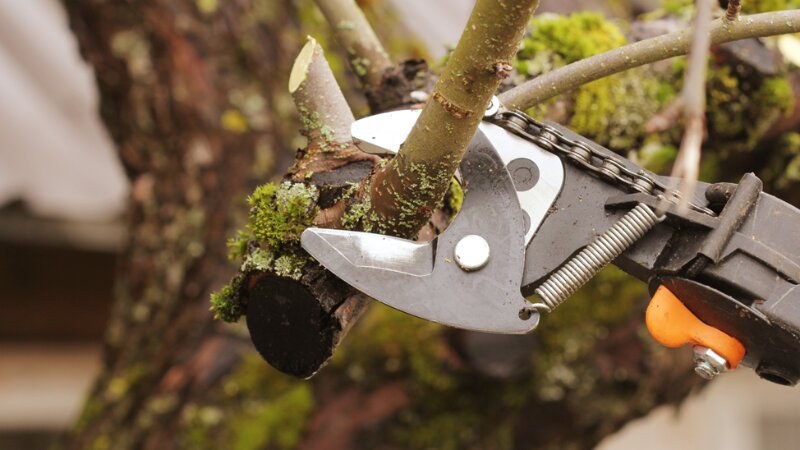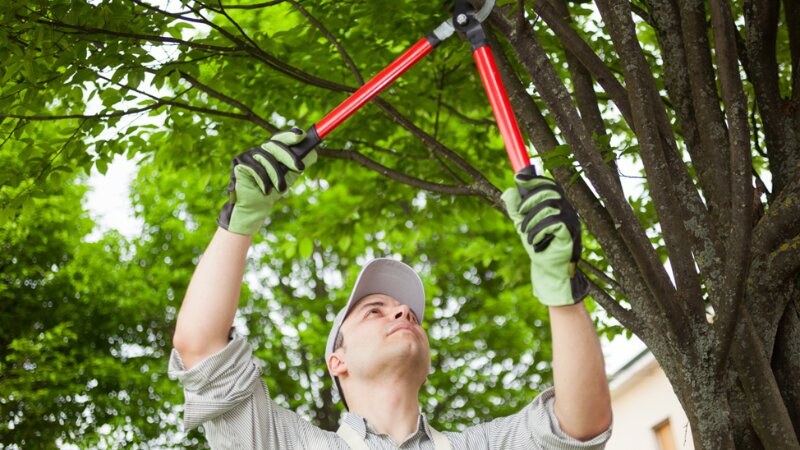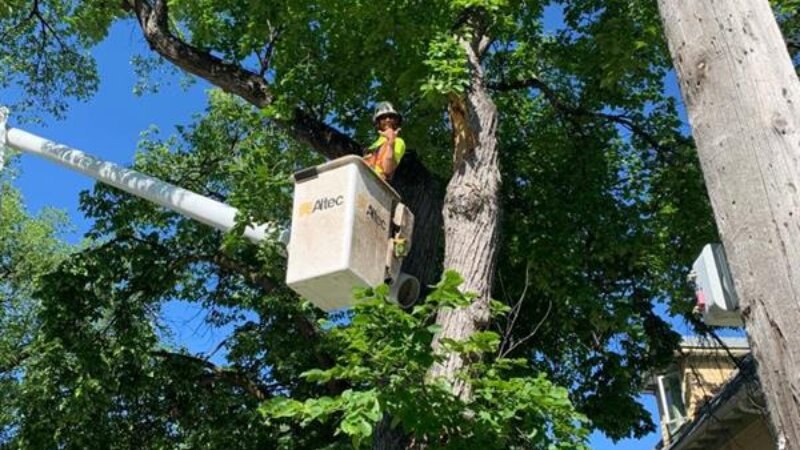Native Trees Spotlight: A Complete Guide to Pruning Native Alberta Trees
Reading time: 7 minutesAlberta boasts an array of native trees, from the majestic trembling aspen to the hardy lodgepole pine. These trees are vital parts of our ecosystem and residential landscapes. It’s also why you should prune them.
With spring about two months away, now’s the perfect time to read up on all the tree pruning tips you’ll need to get started.
So, let's get our hands dirty and explore the ins and outs of keeping your native Alberta trees in top shape!

Why Prune Your Trees?
Why prune, you ask? It's all about keeping our leafy friends healthy and happy.
Pruning snips away dead or diseased branches, improves airflow and sunlight, and even sculpts the tree's natural beauty.
Tree trimming and pruning serve various purposes:
- Removing "3D" branches: Dead, Diseased, or storm-Damaged.
- Trimming height or clearing lower branches.
- Thinning the crown for fresh growth and better air circulation.
- Boosting flowering and fruit production.
- Shaping trees for aesthetic appeal.
- Minimizing fire risks.
- Tackling safety concerns for people and property.
Effective pruning targets dead or diseased wood to halt disease spread and maintain tree vitality.
Why Prune Healthy Trees?
If it’s not broken, why fix it, right? The answer is simple – every branch needs its space.
Pruning keeps otherwise healthy trees in check. When branches get too close, touch, or cross each other, it spells trouble as they grow.
Tree trimming or pruning gives these branches space and lets in essential air and sunlight for leaf growth inside the tree.

When Should You Prune Your Native Alberta Trees?
When pruning our Alberta natives, timing matters. Late winter or early spring, before trees leaf out and the tree is still dormant, is ideal. This minimizes the risk of stress and disease.
Here are the best times to prune different tree species:
- Coniferous like Spruce or Pine: Year-round, but best from March to mid-April or winter.
- Elm & Oak Trees: Winter pruning to prevent diseases. Avoid pruning from April 1 to October 1.
- Flowering and Deciduous Trees: Mid to late March for optimal results to avoid winter damage.
- Birch and Maple: Only during June and July when leaves fully develop. Avoid pruning in spring so you don’t waste their sap.
- Hardwood Trees like Aspen or Ash: Prune in the dormant season.
How to Prune Native Trees in Alberta
Alright, let's get into the nitty-gritty of pruning! The main goal? Keep your trees looking natural, healthy, and the right size. Here's the lowdown:
- Know when to prune and what type of pruning is needed. Visualize the tree post-pruning to avoid any accidental snips.
- Use sharp, clean tools like pruning shears to avoid spreading disease.
- Wear protective gear on your eyes, hands, legs, and head.
- Always start by removing any damaged, dead, or diseased branches.
- Make clean cuts just outside the wrinkled area where branches meet the trunk. Make sure not to touch the healthy branches.
- More is not always better – you can always prune next year.
- Pick a bud that points where you want the branch to grow and snip about ¼ inch above it at a 45-degree angle.
- Angle your cut so sap drips away from the bud and water doesn't sit on the exposed part, preventing disease spread and rot.
- For small stems, snip just above a leaf or branch joint.
- If you’re pruning stems with a diameter bigger than 1.5”, you’ll need a pruning saw. In such instances, wear a hard hat or helmet to protect your head from falling branches.
- Show no mercy to weak crotches, suckers, and watersprouts emerging from the tree’s bottom.
- Paint big pruning wounds with pruning paint to keep disease out.
- Don't wait – remove damaged or dead wood immediately.
- Watch out for tree cankers – bacterial, fungal or frost damage. Remove all branches and stems with sunken lesions, oozing sap, and cracks.
- Get rid of the weaker of two crossing branches; we believe in survival of the fittest!
- Prune the branches getting too friendly with each other with no respect for personal space.
- Keep that natural shape intact by carefully choosing which branches to prune.
Pruning Techniques to Remember
Here are some pruning techniques you can use:
Cleaning
Removal of dying, dead, diseased, and weakly attached branches from the tree’s crown.
Crown Thinning
Selective removal of branches extending from the trunk or main stems to boost light penetration and air movement. It opens the tree’s foliage, reduces unwanted weight, and helps maintain its natural shape.
Reduction
Reduction of the tree’s size for clearance of utility lines.
Raising
Pruning the tree’s lower branches to offer a clear path for buildings, vistas, vehicles, and pedestrians.

Pruning Tips for Different Alberta Natives
Here are some pruning tips for diverse tree species:
Shade Trees
- Train when young to eliminate unwanted branches.
- Prune in early spring; Birch and Maple are exceptions. Prune them in mid-summer.
- Need less pruning if properly pruned when young.
- Consult professional tree pruning service for large trees.
Fruit Trees
- Remove unwanted branches and suckers.
- Thin smaller, outside branches to prevent overloading.
- Prune during the dormant season in early spring.
Evergreens
- Cut Pine Trees' new growth in half in June for a compact shape.
- Shorten Spruce’s new growth in June.
- Repair Spruce leader damage by tying a sturdy stick to form a new leader.
- Shape Cedars and junipers anytime.
- Choose appropriate tree varieties to avoid overgrowth.
How Much Should You Prune Your Tree
Pruning your tree is like giving it a haircut; it's necessary, but you don't want to overdo it!
Every time you prune your tree, it's like giving it a little stress test. Excessive pruning can make your tree more vulnerable. Pruning too much also opens up opportunities for pesky insects and diseases to sneak in. It's like leaving the front door wide open for unwanted guests. Yikes!
As a general rule of thumb, try not to prune more than 25% of the living branches. Think of it like trimming just enough to tidy up but not so much that it feels like a major makeover that leaves your tree stressed.
Ultimately, there’s no set answer; the amount of pruning depends on your tree's size, species, age, and what you're trying to achieve.

Which Tools to Use for Pruning Your Trees
Let's go over tree trimming and pruning tools and staying safe while snipping away!
Grab your trusty pruning shears when you want to make little cuts in branches up to the thickness of a little finger. When dealing with heftier branches, use lopping shears.
When working with pruners, consider bypass pruners for cleaner cuts. When maintaining hedge shape, choose manual shears for smaller jobs and electric or gas shears for larger tasks.
It’s best to use a saw for larger cuts, but be really careful when using chainsaws.
Oh, here's a neat trick: when taking out a big branch, make an upward cut first, then a downward one to avoid damaging the tree.
Here are some tips to remember when using your pruning tools:
- Cleanliness is key. Keep those tools spotless, especially when dealing with a sickly tree.
- Sharpen your gear to make a neat and deep cut.
- You often get what you pay for, so avoid bargain-bin tools and splurge on the right pruning gear.
- Dip your pruner in bleach for a few seconds before snipping the branches.
- Rinse the tools under running water for around 10 minutes after pruning and dry them off completely to keep rust from creeping in.
Tree Pruning Safety Tips
Here’s your guide to staying safe while pruning your trees:
- Protect those peepers – always wear eye gear.
- Suit up with a hard hat, steel-toed boots, and leather gloves for extra protection.
- Have a plan in case things go south – safety first! (Otherwise, hire a specialist to prune trees in Edmonton or anywhere in Alberta)
- New to pruning? Keep your feet on the ground – no tree-climbing for beginners.
- Skip the axes and hatchets – stick to proper pruning gear and power tools, following their safety rules to a T.
- Scope out the scene before you start trimming. Rule of thumb: stay clear of power lines while pruning.
- Avoid using dead branches for support – they're not as sturdy as they seem.
- Leave no half-sawn branches hanging on trees – tidy up properly when you're done.
- Grab your shears and get pruning – your trees will thank you for it!

Professional Tree Pruning Services That Take ALL the Hassle and Stress Away
We get it; there’s a lot to tree trimming and pruning. If heavy-duty pruning isn't your cup of tea, reach out to Green Drop for top-notch tree pruning in Calgary, Edmonton, and Red Deer.
Our certified tree arborists are masters at pruning all kinds of trees, including native Alberta trees. You can trust us to handle the job skillfully and quickly, leaving your trees looking trim and terrific.

